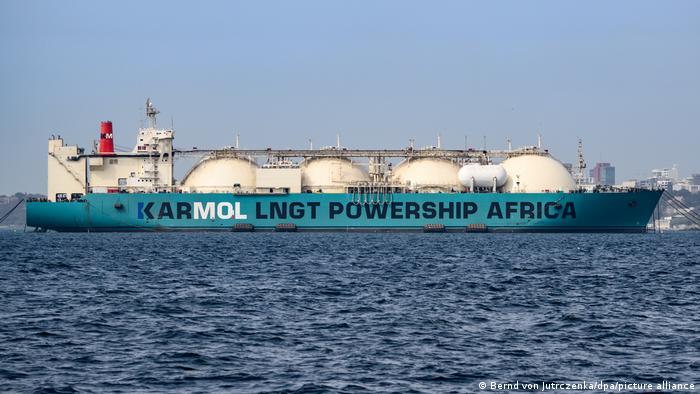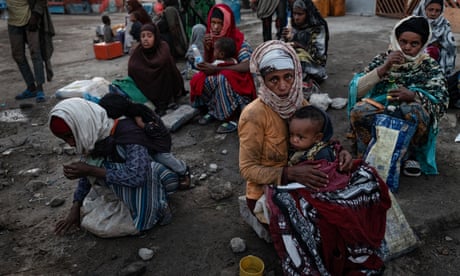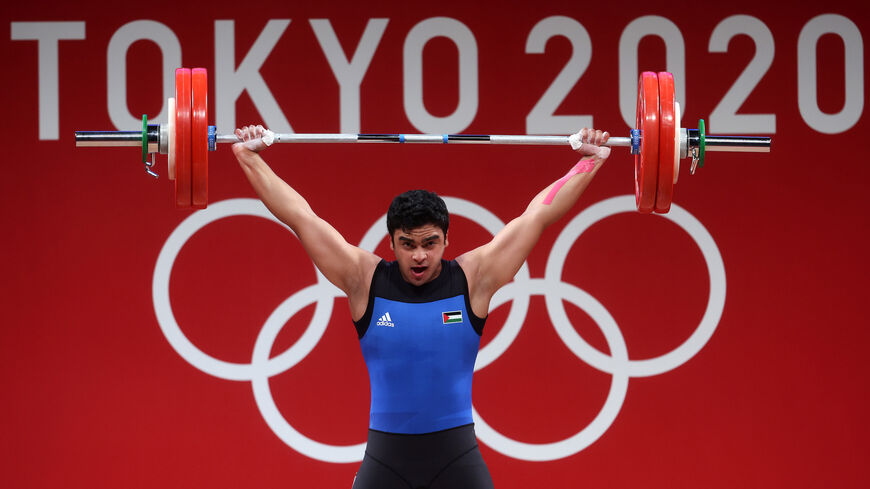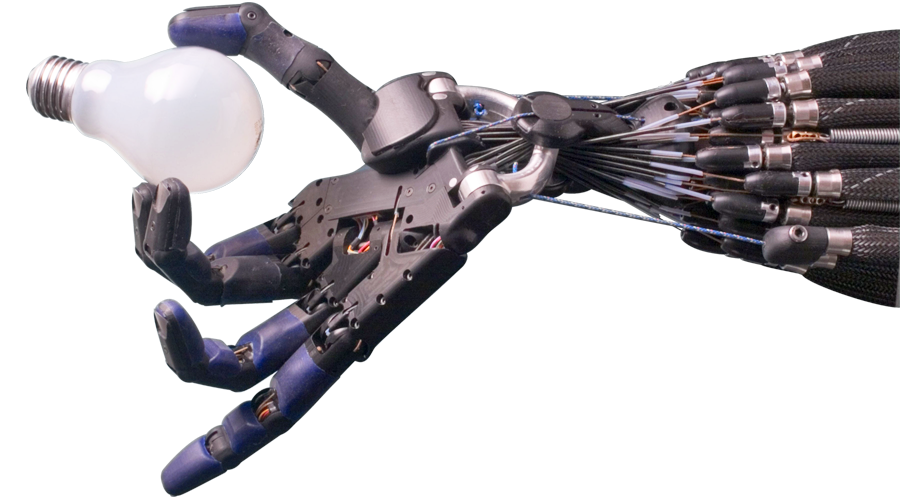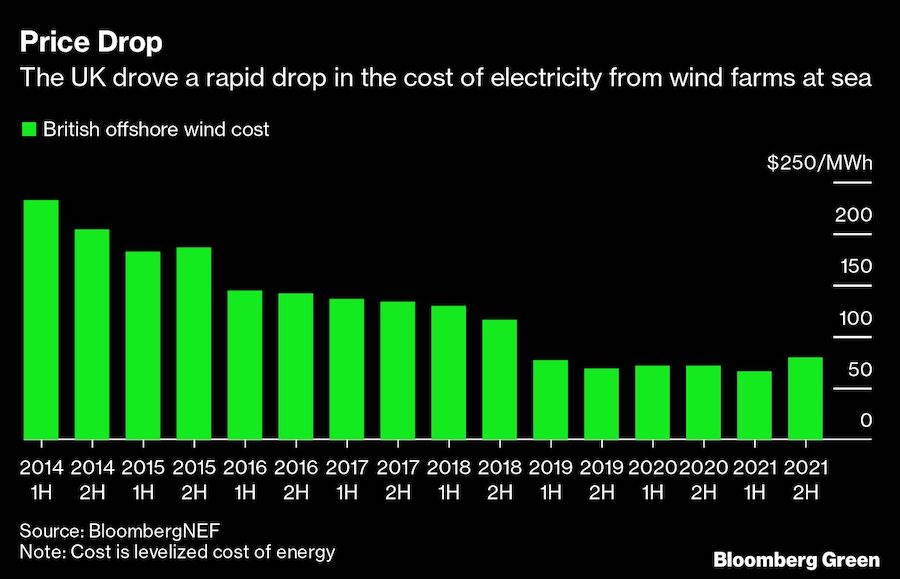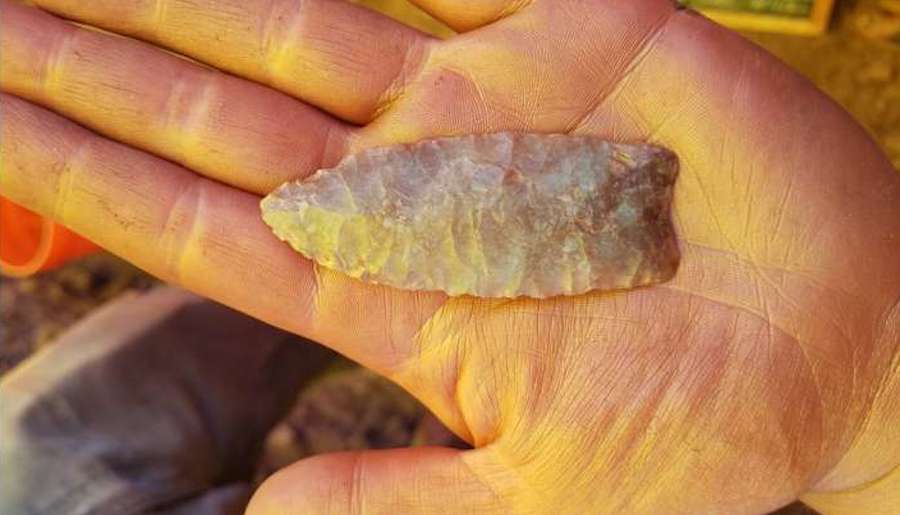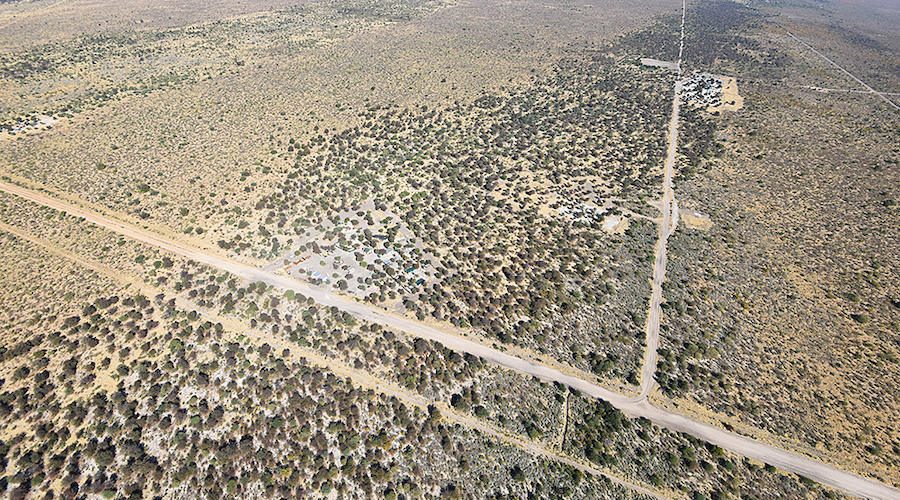Stepan Bandera: Ukrainian hero or Nazi collaborator?
The Mariupol fighters revere him, Russian soldiers hunt his supporters. The myth surrounding Ukrainian nationalist Stepan Bandera is at the heart of Russia's assault on Ukraine. Who was he?
ANTI-SEMITE, WHITE NATIONALIST LIKE
SIMON PETLURA BEFORE HIM
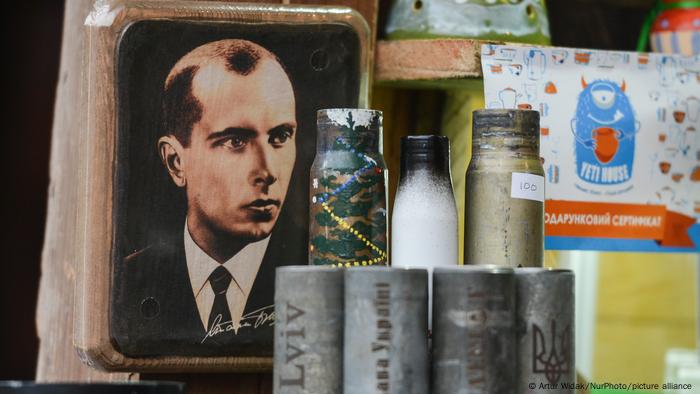
Stepan Bandera remains a divisive figure for many Ukrainians
"Bandera is our father, Ukraine is the mother. We will fight for Ukraine!" sings a young woman in camouflage uniform, carrying a machine gun, in a video that Ukrainian defenders in Mariupol shared on social networks in early May.
The video seems to have been recorded in a bunker at the Azovstal Steelworks, the city's last stand for Ukrainian resistance to Russian troops. "Azov" fighters were on site, too, a regiment founded by radical nationalists that was later put under Ukraine's Interior Ministry.
Stepan Bandera, killed by Soviet intelligence agents in West Germany more than 60 years ago, is probably the best-known Ukrainian nationalist. His name became a symbol long before the war that Russia has been waging against Ukraine since February 24.
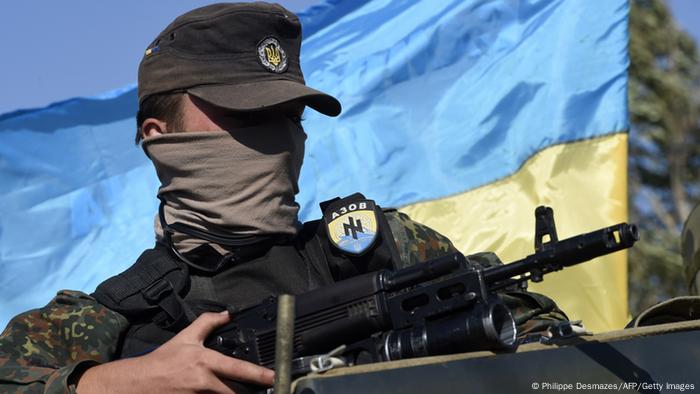
Russia's top prosecutor has asked the Supreme Court to designate the Azov Regiment, seen here in 2014, as a terrorist group
For parts of Ukraine society, Bandera is a hero and role model. Russian propaganda portrays him as an enemy against whose supporters they have been fighting for decades. Russia's military regards the use of his name as a kind of clue to literally hunt down Ukrainians in the occupied territories. Ukrainian media are full of eyewitness accounts of how the Russians chased down Bandera supporters among Ukrainian prisoners of war and civilians alike.
Whoever is deemed to be a supporter faces torture or death. When Russian President Vladimir Putin justified the war against Ukraine in his May 9 speech in Moscow, he spoke of an inevitable confrontation with "neo-Nazis, Banderites."
Life and death of a radical fighter
Bandera's life is closely linked to western Ukraine, which was then part of Poland and the Austro-Hungarian Empire. The son of a priest was born in 1909 in the village of Staryi Uhryniv, now in the province of Ivano-Frankivsk. Bandera studied in Lviv and joined the Organization of Ukrainian Nationalists, which fought underground for independence.
In the 1930s, Bandera was convicted of being a co-organizer of politically-motivated murders in Poland and was released only after the start of World War II. The OUN split into two groups, and Bandera became leader of the more radical wing, OUN-B. While Nazi Germany was preparing for the attack on the Soviet Union, Bandera's comrades-in-arms joined the German leadership with two Ukrainian battalions named Nightingale and Roland.
Bandera was in occupied Poland when on June 30, 1941, his comrades proclaimed an independent Ukrainian state in Nazi-occupied Lviv — and the Germans banned him from traveling to Ukraine. Adolf Hitler rejected the idea of Ukrainian independence, and Bandera was arrested and imprisoned in Sachsenhausen concentration camp until 1944.
The OUN-B continued to fight for independence in Ukraine with the help of its military arm, the Ukrainian Insurgent Army. The Nazis and the Soviets persecuted and killed OUN-B fighters. After the war, Bandera lived in Munich until he was killed in 1959 by a KGB agent using cyanide.
Bandera cult in present-day Ukraine
(AND FOR THE POST WWII DIASPORA IN NORTH AMERICA AND EUROPE)
Ukrainian emigrants in the West revered Bandera. In western Ukraine, a veritable cult emerged after the collapse of the Soviet Union; there are museums, monuments and streets named in his honor.Elsewhere in Ukraine, in particular in the east, many people believed in Soviet historiography. They did not take a favorable view of Bandera, and saw him exclusively as a Nazi collaborator. Under pro-Western politician Ukrainian Viktor Yushchenko, who became president in 2005, Bandera was awarded the title "Hero of Ukraine." His successor, pro-Russia President Viktor Yanukovych, had the title revoked.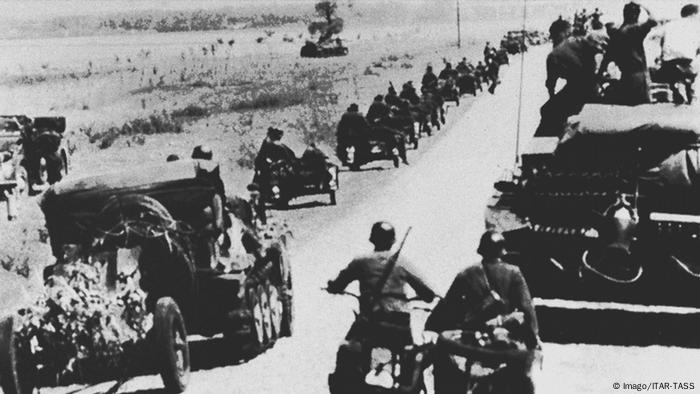 German troops were on the offensive in June 1941Bandera's supporters parade through the capital, Kyiv, every year on his birthday with a torchlight procession. In 2016, Kyiv renamed the avenue called Moscow Prospect after the nationalist, calling it Bandera Prospect. While the view of Bandera has becom more positive over the years, Ukraine remains divided over the issue. A survey by the Democratic Initiative Foundation in April 2021 found that one out of three Ukrainians, 32%, considered Bandera's acts as positive, and just as many took the opposite view.Ukraine that Bandera wantedThe Bandera cult is an "expression of selective memory and politics of history," said Andreas Umland, an expert at the Stockholm Center for Eastern European Studies. It is about remembering that Bandera was a radical fighter for independence who served time in a Polish prison and a German concentration camp and was murdered by the KGB, he told DW."What people do not remember is that both at the beginning and at the end of World War II, the movement that Bandera led, the OUN, cooperated with the Third Reich for various reasons," Umland said.
German troops were on the offensive in June 1941Bandera's supporters parade through the capital, Kyiv, every year on his birthday with a torchlight procession. In 2016, Kyiv renamed the avenue called Moscow Prospect after the nationalist, calling it Bandera Prospect. While the view of Bandera has becom more positive over the years, Ukraine remains divided over the issue. A survey by the Democratic Initiative Foundation in April 2021 found that one out of three Ukrainians, 32%, considered Bandera's acts as positive, and just as many took the opposite view.Ukraine that Bandera wantedThe Bandera cult is an "expression of selective memory and politics of history," said Andreas Umland, an expert at the Stockholm Center for Eastern European Studies. It is about remembering that Bandera was a radical fighter for independence who served time in a Polish prison and a German concentration camp and was murdered by the KGB, he told DW."What people do not remember is that both at the beginning and at the end of World War II, the movement that Bandera led, the OUN, cooperated with the Third Reich for various reasons," Umland said.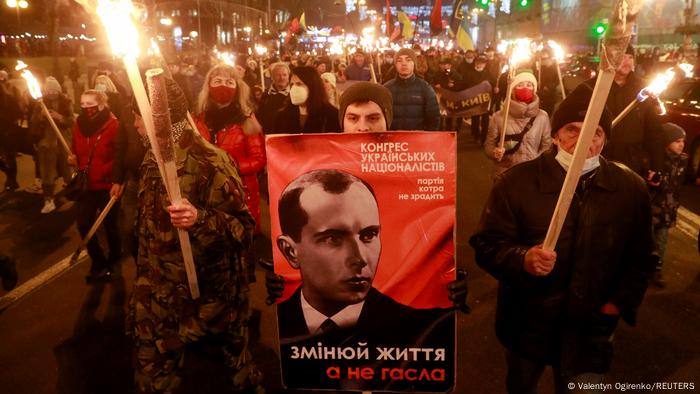 Many Ukrainians are supportive of Bandera's actions
Many Ukrainians are supportive of Bandera's actions
Experts have two explanations, said Umland. One group believes the cooperation was forced, while others argue there was an ideological closeness. Both are true, said Grzegorz Rossolinski-Liebe, a Bandera biographer and historian at the Free University of Berlin."Of course Bandera wanted a Ukrainian state, but he wanted a fascist state, an authoritarian state, one where he would have been the leader," said Rossolinski-Liebe.
Both Umland and Rossolinski-Liebe point out another dark side in the history of the Bandera movement, the involvement of OUN fighters in the murders of civilians, Jews and Poles, in the regions of Galicia and Volhynia. However, they said Bandera personally had no part in the murders.
"The OUN joined the Ukrainian police, in 1941, and helped the Germans murder Jews in western Ukraine," said Rossolinski-Liebe, adding he had found no evidence that Bandera supported or condemned "ethnic cleansing" or killing Jews and other minorities. It was, however, important that people from OUN and UPA "identified with him," he said.
Hugely popular, despite controversial image
Bandera was not a "Nazi," but a "Ukrainian ultranationalist," Umland argued, saying Ukrainian nationalism at the time was "not a copy of Nazism." Rossolinski-Liebe takes a different view, saying Bandera can be called "a radical nationalist, a fascist."
The German-Polish historian disagrees with Ukrainian colleagues who say Bandera's supporters fought Nazis just as much as they fought Soviets. "The USSR was the OUN's most important enemy," said Rossolinski-Liebe. He pointed out that the Soviet People's Commissariat for Internal Affairs waged a brutal battle against Ukrainian nationalists — about 150,000 people were killed and more than 200,000 deported.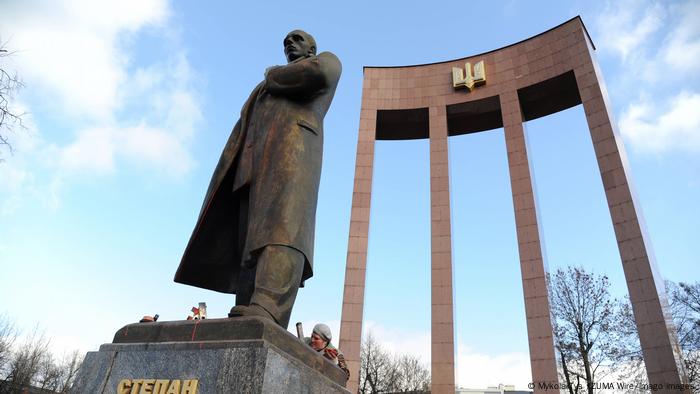 A recent poll found that a majority of Ukrainians still view Bandera favorablySelective memory is not something that's unique for Ukraine — it happens in other countries too, Umland said. He pointed to a prominent example from Germany, where churches and streets are named after Martin Luther — although it's known that he hated Jews.Honoring Bandera damages Ukraine's image because it strains the relationship with Poland and Israel, said Umland, adding that Israel's reticence concerning Russia's current war against Ukraine is one of the consequences. Among Ukrainians, the war seems to have brought about a radical change with regard to Bandera. In April, researchers from the Rating group, a Ukrainian research organization, found that 74% of Ukrainians now view the historical figure favorably. This article has been translated from German
A recent poll found that a majority of Ukrainians still view Bandera favorablySelective memory is not something that's unique for Ukraine — it happens in other countries too, Umland said. He pointed to a prominent example from Germany, where churches and streets are named after Martin Luther — although it's known that he hated Jews.Honoring Bandera damages Ukraine's image because it strains the relationship with Poland and Israel, said Umland, adding that Israel's reticence concerning Russia's current war against Ukraine is one of the consequences. Among Ukrainians, the war seems to have brought about a radical change with regard to Bandera. In April, researchers from the Rating group, a Ukrainian research organization, found that 74% of Ukrainians now view the historical figure favorably. This article has been translated from German
